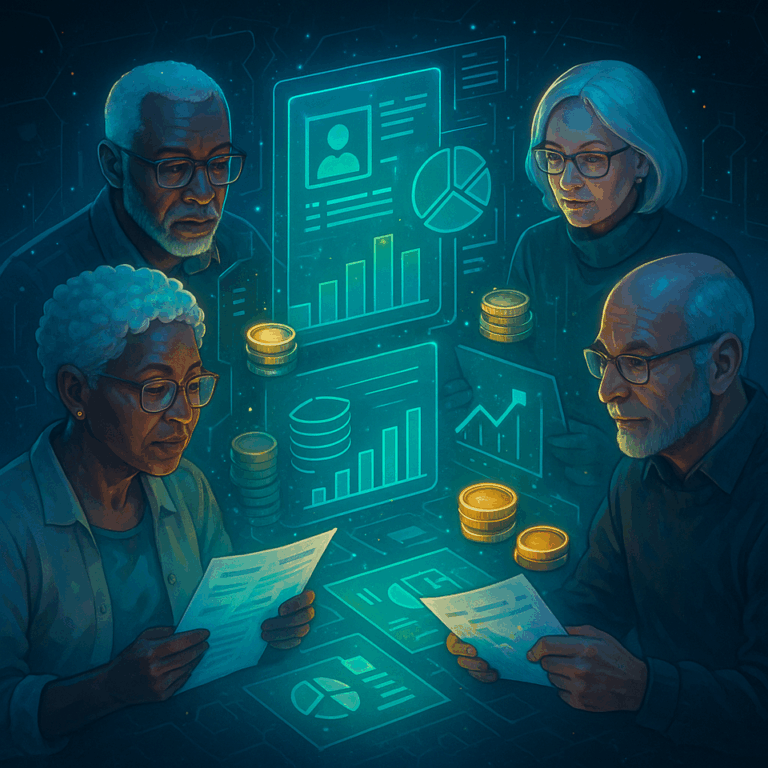Retirement planning in 2025 looks very different from what it did just a decade ago. The rise of digital finance, extended life expectancy, and the transformation of global labor markets have redefined what it means to retire securely.
Today’s retirees and future generations are not simply seeking financial independence — they are looking for sustainable, flexible plans that allow them to maintain lifestyle stability while adapting to shifting economic conditions.
Whether through traditional pension schemes, personal investment portfolios, or hybrid digital retirement accounts, the fundamental goal remains the same: ensuring that individuals can preserve wealth and live comfortably in their later years.
This article explores how to build a resilient retirement strategy in 2025, focusing on risk diversification, digital innovation, and long-term financial sustainability.
The New Landscape of Retirement Planning
Longer Lifespans, Longer Financial Horizons
One of the most profound challenges in modern retirement planning is longevity. According to the World Economic Forum, the average global life expectancy is rising steadily — meaning that many retirees could spend 25 to 30 years in post-work life.
This longevity introduces the need for financial plans that outlast traditional investment timelines, placing greater emphasis on lifetime income streams, health coverage, and inflation-protected savings.
Shifting From Defined Benefits to Defined Contributions
Traditional pension systems, especially in developed nations, have gradually given way to defined contribution models like 401(k)s, IRAs, and private retirement funds. This shift transfers financial responsibility from employers to individuals.
In 2025, digital platforms and robo-advisors make it easier than ever for workers to manage these accounts independently — but they also demand financial literacy and disciplined investing.
Inflation and Market Volatility
Persistent inflation in the early 2020s and geopolitical uncertainty have changed how retirees approach portfolio management. Fixed-income products, once seen as safe, now face real-value erosion.
As a result, investors are diversifying into inflation-hedged assets such as dividend-paying equities, real estate investment trusts (REITs), and even tokenized assets that provide long-term yield opportunities.
Key Elements of a Sustainable Retirement Plan
1. Diversified Income Streams
A strong retirement strategy in 2025 is built on multiple income sources — not just savings. These may include:
-
Employer-sponsored plans (401(k), SEP IRA, etc.)
-
Personal investment accounts (stocks, ETFs, bonds)
-
Real estate income from rental or REITs
-
Annuities providing guaranteed lifetime income
-
Social security or government pension benefits
Diversification minimizes dependence on any single income channel and protects against economic fluctuations.
2. Inflation Protection
Even moderate inflation can dramatically reduce purchasing power over a 20–30-year retirement horizon.
To counteract this, retirees are increasingly turning to Treasury Inflation-Protected Securities (TIPS), commodities, and equity income portfolios that rise alongside market growth.
Some digital platforms now offer automated inflation-adjusted investment portfolios, rebalancing assets to maintain real value.
3. Tax Efficiency
Strategic tax management plays a major role in maximizing net retirement income. In 2025, tax-advantaged accounts such as Roth IRAs or Roth 401(k)s remain popular due to their tax-free withdrawal benefits.
Additionally, retirees with global assets are leveraging digital tax-optimization tools that monitor multiple jurisdictions and automate reporting, ensuring compliance while minimizing tax drag.
4. Longevity and Health Planning
Rising healthcare costs are among the largest risks to retirement stability. Incorporating long-term care insurance, health savings accounts (HSAs), and medical annuities helps retirees prepare for unforeseen medical expenses.
AI-based health forecasting tools, increasingly offered by insurers, allow retirees to project healthcare spending and integrate it directly into their retirement models.
5. Flexibility and Liquidity
A modern retirement plan is no longer static. Retirees in 2025 seek flexible, liquid investment options that allow for withdrawals or reallocation without significant penalties.
Digital wealth management platforms make this easier, enabling retirees to rebalance portfolios dynamically as markets evolve or life circumstances change.
The Role of Technology in Modern Retirement Planning
Robo-Advisors and Automation
AI-powered financial platforms now deliver personalized, algorithmic retirement advice. These systems analyze spending habits, investment goals, and market conditions to build tailored strategies that automatically adjust in real time.
Robo-advisors offer cost-effective portfolio management, reducing human bias while keeping fees significantly lower than traditional advisory services.
Blockchain and Tokenized Retirement Assets
Blockchain technology is revolutionizing how retirement savings are managed. Tokenized funds allow investors to hold fractional shares of diversified assets, from global infrastructure projects to green bonds.
Smart contracts ensure transparency and instant settlement, reducing administrative costs and providing real-time visibility into holdings — a critical advancement for long-term trust and compliance.
The Rise of ESG-Focused Retirement Portfolios
Environmental, Social, and Governance (ESG) investing has gained momentum among retirees seeking values-aligned portfolios that generate both financial and social returns.
In 2025, sustainable investing platforms offer retirement portfolios that include renewable energy companies, sustainable agriculture, and green bonds — aligning profitability with planetary responsibility.
Managing Risk in the Retirement Years
Sequence of Returns Risk
Early losses during retirement can have a disproportionate impact on long-term wealth. To mitigate this, retirees often maintain a cash reserve buffer covering one to three years of expenses, allowing them to avoid liquidating investments during downturns.
Asset Allocation by Life Stage
As individuals transition from accumulation to withdrawal, asset allocation naturally shifts from growth to stability.
In 2025, many portfolios follow a “glide path” model, where equity exposure gradually decreases while fixed-income and defensive assets increase — though still maintaining inflation-protected instruments for balance.
Global Diversification
Global markets provide a hedge against localized economic shocks. Investing across regions — such as Asia-Pacific, Europe, and North America — enhances stability while capturing diverse growth opportunities.
Digital platforms now allow easy access to international ETFs and foreign bonds, giving retirees global exposure with low fees.
Behavioral Finance and Emotional Discipline
Even the best financial plan can fail without emotional discipline. Behavioral finance studies show that retirees often make emotion-driven decisions during volatile markets, selling assets at losses or chasing speculative returns.
In 2025, AI-based financial advisors include behavioral coaching tools that detect emotional bias, provide reminders, and simulate long-term outcomes of short-term decisions — keeping investors aligned with their goals.
The Future of Retirement Planning: AI, Policy, and Personalization
Looking ahead, the next evolution of retirement planning will be driven by:
-
AI-powered forecasting to model longevity and lifestyle costs with precision.
-
Dynamic income algorithms that adjust monthly payouts based on inflation and market performance.
-
Government policy modernization, introducing universal digital pension accounts and better integration between private and public systems.
-
Personalized financial ecosystems, where all aspects of an individual’s wealth, health, and consumption patterns are harmonized into one real-time platform.
By 2025, retirement planning is no longer just about saving — it’s about creating a living system that evolves as the retiree does.
Conclusion
The retirement landscape of 2025 demands flexibility, foresight, and a willingness to embrace innovation.
Stable returns, inflation protection, and longevity planning remain the cornerstones of success, but the tools and strategies have evolved dramatically thanks to technology and globalization.
Whether through AI-driven investment management, diversified income streams, or ESG-based portfolios, individuals today have more power than ever to design personalized, future-proof retirement plans.
In the age of intelligent finance, true retirement security comes not just from wealth accumulation, but from adaptive, data-informed decision-making — ensuring that financial peace of mind lasts as long as life itself.



